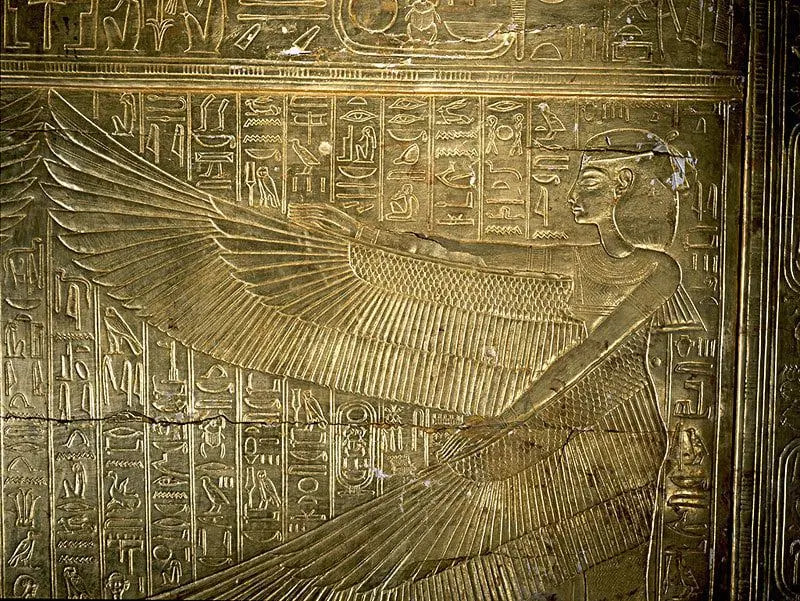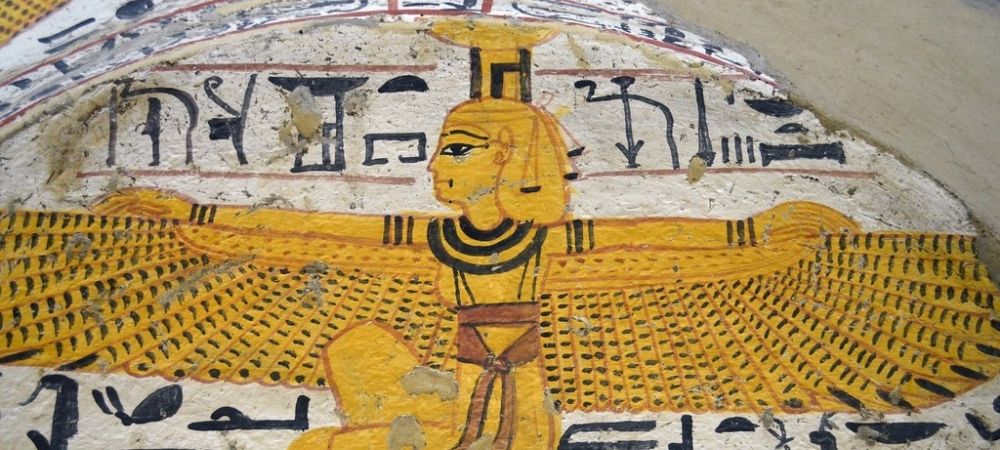The Enduring Legacy of Nephthys
Among the many treasures found in Tutankhamun’s tomb, an exquisite artifact now housed in the Egyptian Museum in Cairo highlights the vital role of the goddess Nephthys in ancient Egyptian beliefs. Revered as a protector of the deceased and a guide through the afterlife, Nephthys played a crucial role in funerary traditions. Her depiction on the shrine, adorned with inscriptions from the Book of the Dead, reflects her significance in both mythology and mortuary customs.

Nephthys in Mythology and the Afterlife
Nephthys was deeply connected to mourning, protection, and the passage between life and death. As the sister of Osiris and the sister-wife of Seth, she was instrumental in the myth of Osiris’s resurrection. After Seth’s betrayal and murder of Osiris, Nephthys and her sister Isis worked to restore his body, ultimately ensuring his rebirth in the afterlife. This act established her as a guardian of the dead, a role frequently emphasized in temple inscriptions and tomb artwork.

Beyond mythology, Nephthys was invoked in funerary rites, offering divine protection to the deceased. She was often depicted alongside Isis, their outstretched wings encircling the sarcophagus as a symbol of safe passage into eternity. Inscriptions in tombs and texts like the Book of the Dead describe her as a compassionate deity who mourned for the dead and guided their souls through the perils of the Duat, the Egyptian underworld.
Symbolism and Protection
One of the most striking aspects of Nephthys’s iconography is her depiction with falcon wings, a symbol of her protective nature. These wings, often seen in tomb paintings and sarcophagi, reinforced her role as a celestial guardian, shielding the departed from malevolent forces. Priests conducting burial ceremonies frequently invoked her name, calling upon her to safeguard the spirit of the deceased and aid their transition to the realm of Osiris.
Her influence extended beyond tombs and rituals. Amulets bearing her image were commonly worn for protection, particularly by those seeking solace in times of grief. These sacred objects carried her divine energy, shielding the wearer from harm and ensuring spiritual guidance.
The Enduring Presence of Nephthys
Nephthys’s role in ancient Egyptian culture endures through the artifacts, texts, and artwork that depict her as a guardian of souls. The shrine from Tutankhamun’s tomb serves as a testament to her lasting significance, reflecting the profound belief in her power over life, death, and rebirth.
Even today, Nephthys remains a powerful symbol of protection and transition, embodying the eternal connection between the mortal and divine realms. Whether through temple carvings, sacred texts, or burial traditions, her presence continues to resonate as a timeless guardian of the afterlife.

